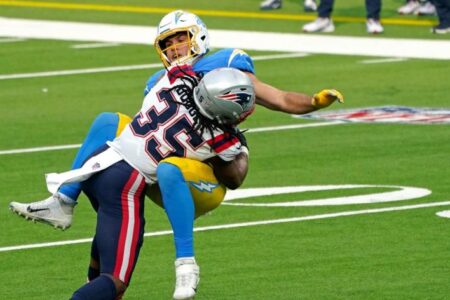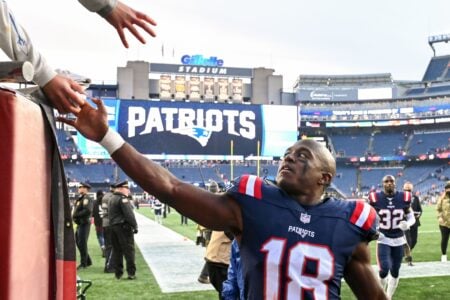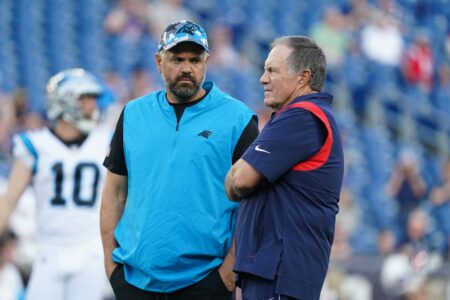Ok. I'll take my shot at this part. You answered your own question beforehand. The truth is, neither Green Bay nor the New England Patriots have bad defenses. What they have is a
low ranking in opponents yards allowed per game. The issue isn't with the defense of these teams, but with the measurements most people are stuck on when it comes to grading defenses:
1. total yards per game. A most terrible measurement.
2. a ranking number. Not the actual
value of the rank. Most people compare ranks not the actual value.
Is the difference between allowing 330 and 355 yards
per game that significant? An extra 25 yards? If you said no, then keep in mind that's the difference between a #10 and a #20 defense. If you said yes keep reading.
It really depends on where they happen, right? Do they lead to first downs, a touchdown or are they "good yards" and "a waste" for their opponents offense because those defenses allowed a few yards on first and 2nd down but got the stop on third?
Not only are vacuum stats bad measurements of rating anything in football, but most people are more concerned with one of the least important. There's never been a a time, year or era since the game of football was invented when points were less important than yards. Nobody cares about how many yards-or meters-a soccer player racks up running up and down the field. Nobody cares how many dribbles a basketball player makes or how many up and down runs on the court one makes. How many miles of travel does a hockey player make around a ring? Who's #1 in history? Anybody know? Nobody?

People are much to focused on the wrong measurements when it comes to football.
What to keep in mind:
Yards= effort. work.
Points = reward. results.
You know the old saying work smart not hard? It's the same in football. But it is a little bit more complex than that, of course.
1. Almost all of these yards measurements are offensive measurements. They are all correctly defined as "opponent's [insert yards measurement] allowed". People miss-use them constantly. We need better ways of measuring defenses.
2. Efficient passing teams can easily have longer games. They score faster, and incompletions stop the clock.(more yards get racked up on both ends).
3. The number of drives in a football game is not always consistent. A defense that allows 400 yards per game might actually allow less yards per drive than a defense that allows 350 ypg if they average more drives. For example:
yards allowed per game:
11th San Diego 335.1
18th Chicago 353.7
yards allowed per drive:
8th Chicago 26.88
21 San Diego 31.69
So which one is it Mr. Yard Stat? Does San Diego's defense rock or suck? Is Chicago top 10 or 18th?

In addition, the difference in yards allowed per drive between the #1 defense and the #32 defense is 14 yards. NE's bottom of the league in both, so at least for NE, Mr. Yard Stat appears to have its mind made up. So basically an extra first down. That's really what NE gives up on average. But...
-If Pat's offense and special teams is always scoring and forcing opponents to take a knee in the end-zone after a kick-off,does that mean the Patriots defense is bad because they
will on average allow more yards?
-If a team has a bad special teams unit that always gives up yards(this
by default leads to their "total defense" allowing fewer yards), does that mean that team's defense is better?
Could this be the case? Let's find out.
NE's opponent average starting field position(NE's defending starting field position):
#2 24.40 yard line.
So yards per game allowed, and Mike Ditka on ESPN, says the Patriots have a bad defense, because their special teams defense pins opponents back so it forces opponents to travel longer to score a touchdown. But isn't this also what gives a defense a good chance to get a stop, thus keeping points allowed low? Good one.
The difference between one NFL defense and another, especially as far as yards go, is almost a statistical wash when you take into consideration: style of offense, time of possession, number of drives, play calling, playing with or without a lead, turnovers, etc. In combination these factors and others have a much GREATER effect on a defense's ranking in yards allowed, compared to their OWN ability to stop teams from getting yards. In other words, unless you have a defense that truly stops everybody from moving, a team's defense in today's NFL has very little control over where they rank in
yards allowed per game. That measurement is affected just as much by all other areas of their own team and flow of the game as it is by their own ability to stop an opponent.
In fact, one of the best measurements in football(I'd say the 2nd most important stat in football), yards per point, which has one of the best correlations to
winning(the #1 stat) says that for an offense to be efficient you need the FEWEST yards and MOST points. For a defense, it's the complete opposite. Allowing the MOST yards and FEWEST points. Either that or 0 yards or 0 points, which is pretty much impossible, at least when it comes to yards(that would more readily indicate you are playing against a terrible NFL offense, not that you have an amazing defense). In which case, both NE and GB qualify as one of the most efficient defenses in the game.
yards:
1 Pittsburgh 273.9
4 San Francisco 308.1
31 Green Bay 400.7
32 New England 412.1
points:
1 San Francisco 13.5
2 Pittsburgh 14.5
12 Green Bay 21.2
14 New England 21.4
opponents yards per point allowed:
1 San Francisco 22.9
2 New England 19.3
3 Green Bay 18.9
4 Pittsburgh 18.8
Huh, interesting. So basically NE and GB are every bit as good as Pittsburg and San Fran in making their opponents bust their ass to get a FG or TD against them, just accomplishing it in different ways.
And winning and losing records?
1 Green Bay
2 New England
3 San Francisco
4(tied) New Orleans
5(tied)Pittsburg
Now keep in mind even yards per point, is also mainly an offensive measurement not a defensive measurement heavily impacted by the other side of your team by way of turnovers and field position. The above yards per point measurement is combined opponent's yards per point allowed. So a better way to say it would be not that NE's defense is one of the most efficient defenses in the league, but rather: whatever it is they are doing, they have forced their opponents offenses to play most inefficiently against them when it comes to scoring. NE makes opponents work really hard to score a point. It also means their opponents have inefficient offenses.
So looking at offensive yards per point:
1 Green Bay 11.5
4 San Francisco 13.4
6 New England 13.7
26 Pittsburgh 17.9
What does this mean? What it means is Pittsburg is busting ass for their offense and helping to make up for Ben's interceptions, stalls and 3 and outs. NE's defense has been helping it's offense out lately, but they are
both playing very efficiently and therefore GB, NE and San Francisco have some of the best defenses and offenses in the league. Go figure!
For NE it makes sense considering what happened in Miami. Offense was very ineffective in the first half, raking up yards and no points. The defense, as you pointed out really stepped up and held Miami down for the offense to begin catching up. This stat is typically not a game average and also measures your "true" total defense and offense. It measures a team's total offense
ability to score and and a team's total defense ability to stop opponents. Yards per point, doesn't ignore those finer details, like yards do(like special teams).
So to recap the reason NE's is ranked lowed in yards allowed is because:
1. They have a very efficient offense who score a lot and forces kick-offs.
2. NE is
#2 in defending starting field position thanks to their awesome special teams pinning opponents back.
3. NE's defense doesn't give up points, and opponents die trying.
4. NE's true total defense efficiency(scoring defense yards per point allowed):
#2
Conclussion:
The Patriots has the #2 defense in the league because they happen to play with the New England Patriots offense and special teams. GB is #3. People are silly creatures and are easily influenced by TV and Mr. Yard Stat. Mr. Yard Stat is full of it. In fact it's so bad at measuring things it can't even figure out if Chicago is a top 10 defense or if it's San Diego that's better by its
own measurement. Mr Yard Stat doesn't know what it's doing.


















